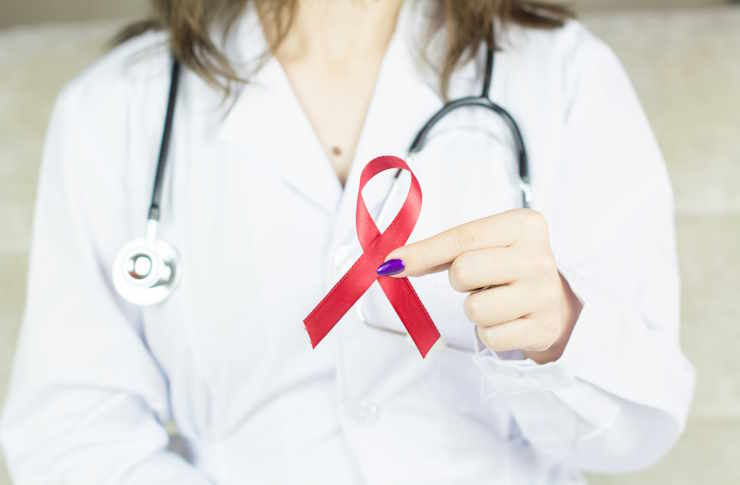The Latest Breakthroughs in COPD Treatment You Should Know About
Chronic Obstructive Pulmonary Disease affects millions of people worldwide, impacting their ability to breathe and perform daily activities. As medical research advances, new treatment options and therapeutic approaches continue to emerge, offering hope for better symptom management and improved quality of life. Understanding these developments can help patients and caregivers make informed decisions about care strategies and available interventions.

Living with Chronic Obstructive Pulmonary Disease presents daily challenges that affect breathing, energy levels, and overall well-being. Recent years have brought significant progress in how healthcare professionals approach this condition, with innovative therapies and management strategies becoming more accessible. From advanced medication delivery systems to personalized treatment plans, the landscape of respiratory care continues to evolve in meaningful ways.
What Are the Current Treatment Options for COPD in 2025?
The foundation of COPD management typically involves a combination of bronchodilators, which help open airways, and corticosteroids to reduce inflammation. Long-acting beta-agonists and anticholinergics have become standard components of maintenance therapy. Recent developments include triple therapy combinations that deliver multiple medications through a single inhaler, simplifying treatment regimens and improving adherence. Biologic therapies targeting specific inflammatory pathways are also being studied for patients with particular disease characteristics. Pulmonary rehabilitation programs combine exercise training, education, and behavioral interventions to help patients maximize their functional capacity. Oxygen therapy remains essential for those with severe disease and low blood oxygen levels, while newer portable concentrators have made supplemental oxygen more convenient for active lifestyles.
How Do COPD Treatment Costs Compare Across Different Options?
Understanding the financial aspects of COPD care helps patients plan for long-term management. Medication costs vary significantly based on drug type, brand versus generic availability, and insurance coverage. Inhaled bronchodilators typically range from 30 to 400 dollars monthly depending on whether they are short-acting or long-acting formulations. Combination inhalers that include multiple medications often cost between 200 and 500 dollars per month without insurance. Pulmonary rehabilitation programs may involve copayments of 20 to 75 dollars per session, with typical programs consisting of 18 to 36 sessions. Oxygen equipment costs depend on delivery method, with stationary concentrators often covered by insurance while portable units may require out-of-pocket expenses ranging from 300 to 3,000 dollars. Biologic therapies, when prescribed for specific patient populations, can cost several thousand dollars per dose, though patient assistance programs may help reduce expenses.
Prices, rates, or cost estimates mentioned in this article are based on the latest available information but may change over time. Independent research is advised before making financial decisions.
What Should You Consider in a COPD Treatment Comparison?
Selecting the most appropriate treatment approach requires evaluating multiple factors beyond medication effectiveness. Inhaler technique and device preference significantly impact treatment success, as different delivery systems require varying coordination and inspiratory effort. Some patients find dry powder inhalers easier to use, while others prefer soft mist or metered-dose inhalers. Side effect profiles differ among medication classes, with bronchodilators potentially causing tremors or rapid heartbeat, while corticosteroids may increase infection risk or affect bone density with long-term use. Treatment frequency matters for adherence, with once-daily medications generally preferred over multiple daily doses. Disease severity and symptom patterns guide therapy selection, as patients with frequent exacerbations may benefit from different strategies than those with stable disease. Comorbid conditions like heart disease or osteoporosis influence medication choices and require careful coordination between healthcare providers.
How Do COPD Treatment Prices Vary by Provider and Setting?
The healthcare setting and provider network significantly influence treatment costs. Retail pharmacies, mail-order services, and specialty pharmacies each offer different pricing structures and convenience factors. Generic medications typically cost 50 to 80 percent less than brand-name equivalents when available. Hospital-based pulmonary rehabilitation programs may have different fee structures compared to outpatient facilities or home-based programs. Telemedicine consultations for routine follow-up visits often cost less than in-person appointments while providing convenient access to specialists. Durable medical equipment suppliers vary in their pricing for oxygen concentrators, nebulizers, and related supplies, making comparison shopping worthwhile.
| Treatment Type | Provider/Setting | Estimated Monthly Cost |
|---|---|---|
| Short-Acting Bronchodilator | Retail Pharmacy | 30 to 80 dollars |
| Long-Acting Combination Inhaler | Mail-Order Pharmacy | 200 to 450 dollars |
| Pulmonary Rehabilitation | Hospital Outpatient Program | 400 to 1,200 dollars (total program) |
| Oxygen Therapy | Home Equipment Supplier | 50 to 300 dollars (with insurance) |
| Biologic Therapy | Specialty Pharmacy | 2,000 to 5,000 dollars per dose |
Prices, rates, or cost estimates mentioned in this article are based on the latest available information but may change over time. Independent research is advised before making financial decisions.
What Role Does Lifestyle Modification Play in COPD Management?
Medication alone cannot address all aspects of COPD, making lifestyle changes essential components of comprehensive care. Smoking cessation remains the single most important intervention for slowing disease progression, with numerous support programs and pharmacologic aids available. Regular physical activity, tailored to individual capacity, helps maintain muscle strength and cardiovascular fitness. Nutritional support addresses the increased caloric needs and potential weight loss common in advanced disease. Vaccination against influenza and pneumococcal infections reduces exacerbation risk. Air quality awareness helps patients avoid environmental triggers like pollution, allergens, and extreme temperatures. Breathing techniques such as pursed-lip breathing and diaphragmatic breathing improve ventilation efficiency and reduce dyspnea during activities.
What Emerging Therapies Show Promise for COPD Treatment?
Research continues to explore novel approaches that may complement or enhance existing treatments. Stem cell therapies are being investigated for their potential to repair damaged lung tissue, though they remain experimental. Targeted anti-inflammatory agents that block specific molecular pathways involved in COPD progression are in various stages of clinical trials. Bronchoscopic lung volume reduction procedures offer minimally invasive alternatives for select patients with severe emphysema. Gene therapy approaches aim to address underlying cellular dysfunction, though practical applications remain years away. Artificial intelligence and wearable technology are improving disease monitoring and early detection of exacerbations, enabling timely intervention. These developments represent the ongoing commitment to finding more effective solutions for this challenging condition.
Managing COPD requires a multifaceted approach that combines appropriate medications, lifestyle modifications, and regular medical supervision. The evolving treatment landscape offers more options than ever before, though navigating choices requires careful consideration of individual circumstances, preferences, and financial factors. Staying informed about current and emerging therapies empowers patients to work collaboratively with healthcare providers in developing personalized management plans that optimize breathing function and quality of life.
This article is for informational purposes only and should not be considered medical advice. Please consult a qualified healthcare professional for personalized guidance and treatment.




